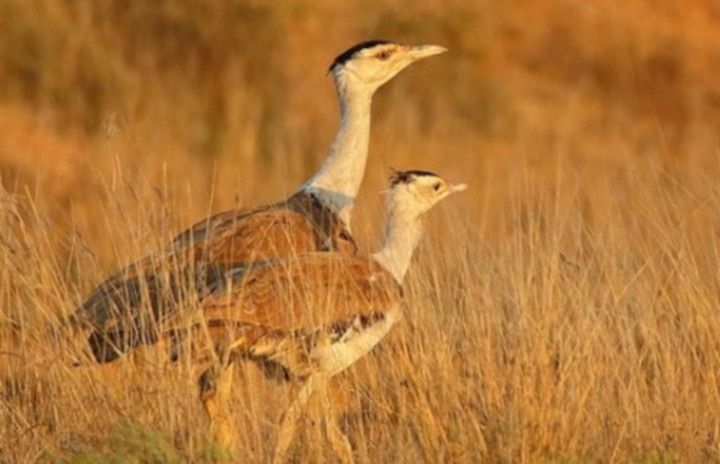One of the saddest things that conservationists and scientists have to deal with, in my opinion, is how their warnings and words of caution go unheeded till the absolute last minute. Then it becomes a case of “Oh well, nothing to be done now!”, which is not true because as they say, it’s not over till it’s over. This is precisely why even though warning bells were ignored about the impending extinction of the Great Indian Bustard, there is a need now, more than ever, to band together to try and ensure that independent India doesn’t see the first-ever extinction of a bird in our lifetime.
More About The Bird In Question…
The Great Indian Bustard is native to India and shares the same kind of habitat of the black buck. Since this bird is not found anywhere else in the world, once its population dies out here, that’s the end. They are only found in our country and as of 2018, there are fewer than 150 individuals fragmented across habitats in Rajasthan, Gujarat, Maharashtra, Andhra Pradesh and Karnataka. Madhya Pradesh was also a part of this list, but it has now been declared locally extinct in the state. It is a grassland bird that was even considered when officials were picking what the national bird should be, but ultimately it was not chosen because they feared that the name would be commonly misspelt as ‘bastard’ instead of ‘bustard’.
How Did We Get Here?
This bird, which is endemic to India, with a world population of only 150 now, has many reasons that contributed to its sharp decline in such a short period of time. It is estimated that the Great Indian Bustard (GIB) can go extinct as early as the year 2020 if something isn’t done… fast! Madhya Pradesh has already lost all its birds, Andhra Pradesh, Gujarat and Karnataka have a handful in each state, and topping the list is Rajasthan, with a measly 100. By far the saddest is the story of the one lonely GIB in Maharashtra, who performs its mating ritual for a non-existent mate.
Amongst the different reasons for its population decline are the fact that India’s grasslands (their natural habitats) are being converted and developed by a government, who thinks of these areas as revenue wastelands. Why protect natural spaces when they can be used for ‘development’, right? Another reason is that this rapid urbanisation has led to a lot of waste, and therefore a proliferation of stray dogs to whom these ground-nesting birds are super easy targets. Unfortunately, even the GIB’s own biological clock is not helping matters because they only breed once every other year. They are like humans in that sense, one can say.
But most importantly, the biggest factor that has caused this rapid decline is the high tension power transmission lines, which are present throughout GIB grassland territory. They have been the cause of an innumerable number of electrocutions. Close to 20 Great Indian Bustards, on an average, are said to die by electrocution every year, and that is a scary number considering their total population, as mentioned earlier, is only 150.
What Can We Do?
Sanctuary Asia and The Corbett Foundation & Conservation India have started a campaign petition that they will submit to the Ministry of Power. It is to appeal to the government to simply bury the high tension power lines and assure this magnificent bird has its rightful space in its own habitat.
As wildlife conservationist Cara Tejpal said on Instagram,
I cannot bring myself to sit back when we are witnessing the first major extinction that Independent India will see. I fear that it will say about us as a people if we allow the GIB to slip into oblivion. Particularly so because there are both solutions and money at our disposal. What’s missing altogether is political will and public outrage. The latter is so easy to express in the age of social media and I implore you to be angry. Our petition to India’s Ministry of Power is now live on the Conservation India website.
You can join in the campaign and sign the petition here.

